From archives into living rooms
Interview with Boglárka Börcsök
Edited by Nicole Bradbury

#dance #film #hungary #art #movement #archive #ladies #relation #urgency #discontinuity #practice #political #context #valeska #gert #notion #future #communism #propaganda #fugitive #body #ghost
Sasha & Nitsan
We both saw your movie ‘The Art of Movement’ and were deeply touched and moved by the devotion, stories, and the appreciation of knowledge that was shared and passed. How did you come across this topic and when? How do you keep on developing this heritage work currently leading to your latest performance work 'Figuring Age'?
Boglárka
I want to jump shortly to your second question about “heritage”. Because, from the very beginning, I was searching for a critical angle on this term. Heritage itself for me already pre-signifies a certain notion of value, something that's canonized. Since I was dealing with my gap of historical knowledge, my interest was tending more towards hidden figures, marginal narratives that are usually excluded from or simply not written into this kind of canonized heritage realm. So for me heritage itself already signified the notion of continuity or something that we continue to value. I was more interested in discontinuities, and when it comes to Hungary, there were a lot of those. So I shifted my focus from heritage to the idea of inheriting, which for me had a lot more to do with generational transmissions, narratives which can emerge from our own family context. Things you don't know about, because it's kept in silence. Instead of hegemonic knowledge, I was drifting towards personal histories and how to tell something from there.
This is probably the reason why I was excited to meet seven or eight dancers who were by then between 80 and 107 years old in Budapest.
Each of them were part of the early development of modern dance, which is called in Hungarian: Art of Movement. For a year, whenever I traveled back to Hungary, I tried to visit one of them. I moved my research from archives into living rooms. The project developed from these personal encounters with the elderly women. In the context of European dance history Hungarian figures are extremely peripheral. The three Ladies I chose for the film are not only marginal because of their age, but also due to their life trajectories and ruptures in their personal and professional lives, which was effected by two World Wars, the Holocaust and the banning of the art of movement in the 1950’s. Instead of historical truth or objective history, I was interested to retrace some of the undercurrent cultural political movements that possibly create or don’t create heritage, where things can get lost. I understood that a lack of knowledge can also be a product of history. What I was searching for in archives, was already present in the bodies of these elderly dancers and in their memory. When it comes to dance archives, you mostly encounter figures who are already assigned to a certain historical period. When I met these old Ladies, their personal dance archives were still mostly in their drawers and it was quite nice to see that. But when you watch their black and white photos, suddenly they again become historical beings, and my interest was not to reduce them to ‘figures of a certain time’. They are bodies of knowledge, archives that happen to age, they transform. Their embodiment of a century was something that just blew me away, and I really thought a lot about how to transmit this scale of time with their bodies. When we filmed them dancing in front of the camera, we felt that it was their last moment of performing, which is something rare to witness. It was a celebration of their expressive yet opaque movements that could be deciphered and say, this might be more like modern dance, but for me it was less interesting to verify something, but rather to say that their physical expression can have a relevance as it is. They were still very much alive then. What emerged out of these first meetings was the urgency to find a format in which we can continue to work together.
This is probably the reason why I was excited to meet seven or eight dancers who were by then between 80 and 107 years old in Budapest.
Each of them were part of the early development of modern dance, which is called in Hungarian: Art of Movement. For a year, whenever I traveled back to Hungary, I tried to visit one of them. I moved my research from archives into living rooms. The project developed from these personal encounters with the elderly women. In the context of European dance history Hungarian figures are extremely peripheral. The three Ladies I chose for the film are not only marginal because of their age, but also due to their life trajectories and ruptures in their personal and professional lives, which was effected by two World Wars, the Holocaust and the banning of the art of movement in the 1950’s. Instead of historical truth or objective history, I was interested to retrace some of the undercurrent cultural political movements that possibly create or don’t create heritage, where things can get lost. I understood that a lack of knowledge can also be a product of history. What I was searching for in archives, was already present in the bodies of these elderly dancers and in their memory. When it comes to dance archives, you mostly encounter figures who are already assigned to a certain historical period. When I met these old Ladies, their personal dance archives were still mostly in their drawers and it was quite nice to see that. But when you watch their black and white photos, suddenly they again become historical beings, and my interest was not to reduce them to ‘figures of a certain time’. They are bodies of knowledge, archives that happen to age, they transform. Their embodiment of a century was something that just blew me away, and I really thought a lot about how to transmit this scale of time with their bodies. When we filmed them dancing in front of the camera, we felt that it was their last moment of performing, which is something rare to witness. It was a celebration of their expressive yet opaque movements that could be deciphered and say, this might be more like modern dance, but for me it was less interesting to verify something, but rather to say that their physical expression can have a relevance as it is. They were still very much alive then. What emerged out of these first meetings was the urgency to find a format in which we can continue to work together.
Sasha
For me, it was very interesting to see through the movie how the women describe their approach and practice. I see those practices as super useful and interesting for the current moment. All educational programs are studying the same techniques currently, and the movement that these women are talking about and doing is from 100 years ago, but it's so fresh in comparison to what we are studying currently.
Boglárka
The Art of Movement emerged out of multiple practices. It was a heterogeneous movement, which was partly dance, but also gymnastics and a life-reform movement. It contributed to a new social paradigm for women. The pioneers of the Art of Movement were mostly women, who went to study abroad and later established their own schools in Hungary. Based on international influences, these practices were very different from each other, and each of the three women chosen for the film came from a different school. Éva E Kovács studied for example in the school of Valéria Dienes, who was actually the first woman ever to get a university diploma in Hungary. Based on her experiences in Raymond Duncan's colony in France she established her own school and philosophy of dance in Budapest. Isadora Duncan herself came to perform in Budapest amongst several famous figures like Harald Kreutzberg, Niddy Impekoven, Rosalia Chladek, Maud Allan. Valeska Gert came to perform as well. I've actually discovered Valeska for the first time in the Hungarian press reviews.
Irén Preisich - the other protagonist of the film - who was already 101 at time of filming, studied from two young women, who are almost untraceable in the archives today. They established their school when they were only 20 - 22 years old! Imagine. Their methodology was critiqued a lot, because they were mostly improvising to music or dancing in silence. There was a lot of rivalry between the schools. Ágnes Roboz, for example, studied from Olga Szentpál, who enrolled at the Dalcroze school in Germany. So when it comes to transmission of knowledge, these women carry very different aesthetic paradigms, and principles of movement.
Nitsan
From the movie we can see beautifully how oral transmission, as well as a passage between generations, is taking place, can you elaborate on your experience of working with those ladies? Does it seem relevant for you to keep the scores and suppose those as a practice through contemporary dance research?
Nitsan
From the movie we can see beautifully how oral transmission, as well as a passage between generations, is taking place, can you elaborate on your experience of working with those ladies? Does it seem relevant for you to keep the scores and suppose those as a practice through contemporary dance research?
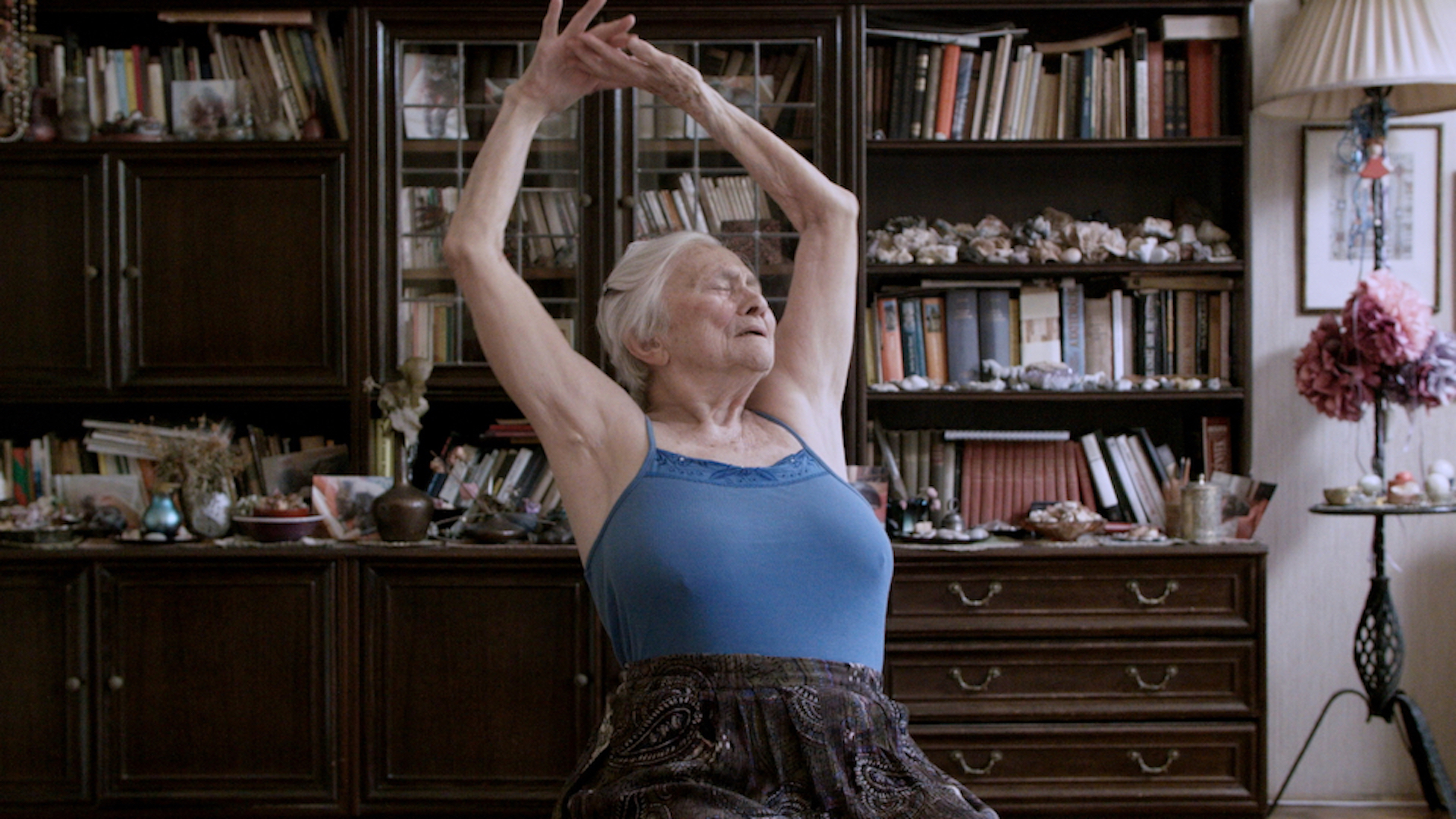
Boglárka
While preparing for the filming process, I was thinking a lot about how to use my body as a tool, also as an archival tool. I realized that by offering myself as a dancer or more precisely a dance student, the elderly women opened up and were motivated to correct me, to show me how to do it better. It became a method to activate their memory and initiate a physical exchange. You’ve mentioned the word oral transmission, but there is also bodily transmission which is the basis of all dance education and when you study dance you have a mimetic relationship to your teacher, you imitate. It was exciting to actually work with such old bodies, who also need to take a rest and sleep and who are not always consistent. It was amazing to see how much their physical posture changed when they entered their teaching body. That was a strong transformation.
While preparing for the filming process, I was thinking a lot about how to use my body as a tool, also as an archival tool. I realized that by offering myself as a dancer or more precisely a dance student, the elderly women opened up and were motivated to correct me, to show me how to do it better. It became a method to activate their memory and initiate a physical exchange. You’ve mentioned the word oral transmission, but there is also bodily transmission which is the basis of all dance education and when you study dance you have a mimetic relationship to your teacher, you imitate. It was exciting to actually work with such old bodies, who also need to take a rest and sleep and who are not always consistent. It was amazing to see how much their physical posture changed when they entered their teaching body. That was a strong transformation.
Sasha & Nitsan
You’ve mentioned earlier Valeska Gert. We both saw you with Eszter Salamon performing together in the Valeska Gert works. Do you consider archival work as a lifelong long project for you? What moves you most when confronting characters and narratives from the archive?
Boglárka
Valeska Gert never became a teacher unlike most of the people who were part of the modern dance movement. For me she was a real artist who continues to have a strong impact on my work. I have to admit that her radical and fearless approach to voice, movement, and expression feels much closer to me then the modern dance from the ‘30's and ‘40's. When we started working with Eszter on the Valeska Gert projects, first we created the voice-installation ‘Love Letters to Valeska Gert’. Just to say that I'm still in love with her. Valeska Gert didn’t like abstract dance and she critiqued her modern dance contemporaries. It was interesting to work on Valeska Gert in parallel to the elderly dancers and the art of movement. The frame was quite different in both projects. With elderly dancers, my interest was in revealing the gaps between our practices rather than assume a smooth continuity. The dance classes in the film may give an idea that we are not speaking the same physical language. There is a dialogue. I try to be precise, but I also don't always understand the codes, which undermines the old idea that modern dance is universal. Perhaps what it reveals most is a generational gap of more than 70 years. That's a big gap to bridge.
Nitsan
I think that there is something very strong in this kind of hacking. I think about the West and the recognition, which came from some later generations that going back to the East might be hard. I'm thinking of the complex picture regarding definitions, and the fact that an aging body would never be a trend. Maybe you can speak a little bit about this genre that you're choosing, or this medium, and what it means for you, because you're basically a dancer voicing dancers?
Boglárka
Eszter Salamon always points out how modern dance was mute at the time when Valeska Gert already experimented with her voice. Eszter also has a strong practice of working on female autobiographies, and I think we connected through these interests. Giving voice to others is a political practice. By dealing with the aged dancing body there is an apparent body - politic both in the film and in the performance. However, through the personal stories and memories of the elderly dancers we can move through their different time periods that unravel their relationship between cultural and political contexts, and how it shaped the developments of dance. For me, the film was a way to study what movement can be.
But also a way to relate to the actual political context in Hungary. When we entered the private spaces of these women and to ask them about their history, we needed to be sensitive. I think the fact that the filming crew came from outside of Hungary created a space of openness. Moreover, Irén, Éva and Ágnes have a history of reasons for paranoia, because all of them came from Jewish families.
Irén, Éva and Ágnes have a history of reasons for paranoia, because all of them came from Jewish families. They all survived the Holocaust by hiding in Budapest, which I think is also very particular, because if you came from the countryside, you had little chance to survive. There were times when they were not allowed to go on stage like in Germany for example and shortly after the Second World War the Art of Movement was banned by the communist regime. So these women had to stop or adapt their practices throughout their lives.
So making this film against the backdrop of the political context in Hungary, it really helped us to have other perspectives on history, otherwise it’s easy to lapse into reactionary positions. This project for me was also a way to deal with and try to understand the roots of the rising nationalism in post-socialist countries. It was necessary to retrace how the different political ideologies and movements were embodied physically. In terms of archives, there is archive footage in the film.
These materials don't come from dance archives. All this footage comes from a newsreel archive - and these materials were shown in cinemas before movies started (except for the first video - which is a private recording of Irén from 1934 - filmed by her brother). So we were interested in the dance which was already embedded in political and cultural events of the time as they appeared in the news. These footage are from the ‘30's to ‘50's paralleling the stories that are told by the elderly dancers. We were searching for the Art of Movement in this archive, however there weren’t many materials. So this is where my mentioning of ideology comes in. Archival footage is often treated in documentaries as factual or truthful, a form of historical proof. On the other hand, none of these clips are objective or neutral, as they represent very strongly the hegemonic ideas of the body, culture and aesthetics. Seeing them in a timeline as they are intersecting with the women's stories, their construction gets revealed. The footage are counterpoints that give the image of dance that was officially communicated to the larger society, dance which was approved or even used as propaganda.
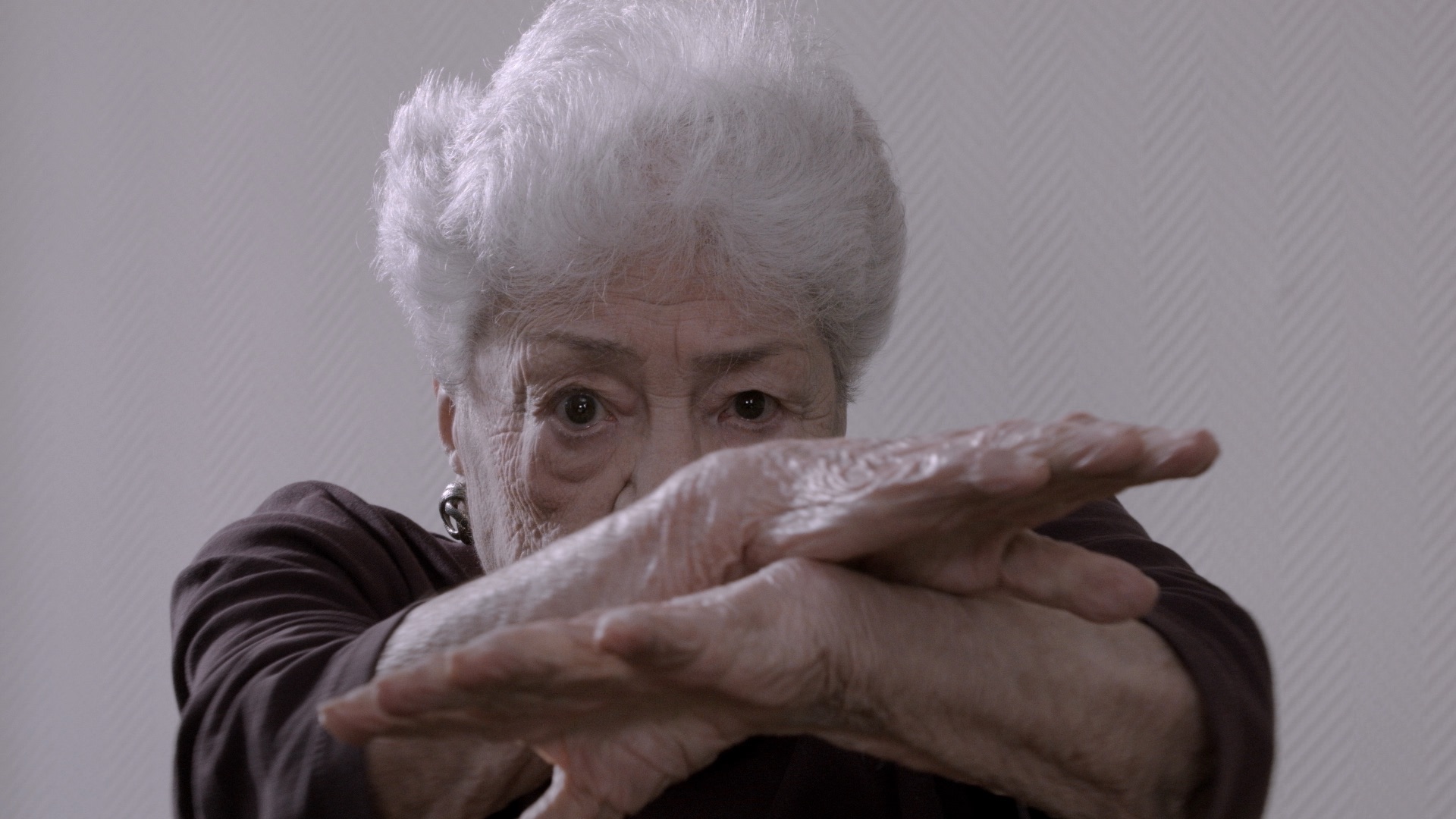
How was it for you to dedicate the performance to the elderly dancers rather than reconstructing a dance piece that they were doing? Do you feel the elderly bodies that you embody inside of you, because you became them so precisely? Are they present? Does this practice that you learned from them stay with you like a vocabulary, or your artistic approach, your toolkit?
Boglárka
In ‘Figuring Age’ I continue the dialogue with the elderly women through embodying them. At the same time, I don’t make myself look old by putting on wrinkles in order to erase my age. The challenge here was to enable multiple bodies to exist at the same time. The audience has to negotiate with seeing me young, while encountering the three old women. It's a fugitive body, it's a body that escapes representation. The performance is a lot about creating a space that lets these elderly women reappear, but also gives space to another sense of time. It's about being together in a fiction, but in a fiction which is shared. I’m addressing the spectators all the time, there is also touch, physical weight. The work invites other temporalities to emerge through the stories and memories. But you could say that a certain notion of future exists there too. The process of making this performance needed this whole research process of making the film beforehand.
Nitsan
It's really like the practice of becoming. I want to speak about the fact that you keep calling your work research, which is positioning it into some particular value place, because it seems to have different and multiple outcomes, and it's taking place across multiple years. I could even say the film is documentary, but also, the performance that we saw live is what I would consider a documentary as well and this created a way of working through relationality.
It's really like the practice of becoming. I want to speak about the fact that you keep calling your work research, which is positioning it into some particular value place, because it seems to have different and multiple outcomes, and it's taking place across multiple years. I could even say the film is documentary, but also, the performance that we saw live is what I would consider a documentary as well and this created a way of working through relationality.
Boglárka
I get what you mean about the performance being a documentary, but I like to see it more as fiction. The film became a documentary because of circumstances and urgency to film these women then, as there might not be a possibility to continue working together.
I was collaborating with Andreas Bolm in both the film and the performance, whom you met during the performance. We started working together very closely during the editing of the film, but he was also there during the filming process. Andreas is a filmmaker, but it made total sense to continue working together on the performance. Our question was how to keep going beyond the filmed footage? Or rather, how not to stop there where the filmed materials end? That's where the
discourse of the ghosts starts, and where the ghosts can emerge between the mediums of film and performance. I’m not talking now about a literal idea of the ghost, but a ghost more in a Derridean sense. How things can come back, or return, which one can also see in relationship to history or to political contexts.
Nitsan
You are turning away from us in the beginning of the performance and you're really turning us towards ghosts. We see this transformation, which is so precious, and the whole idea that there is an urgency in the fact that you made this project. I'm also relating to the idea of the impossibility of returning or not returning to my own relation to Germany, as someone who had roots here before the Holocaust and coming back otherwise, it’s an impossibility.
Nitsan
You are turning away from us in the beginning of the performance and you're really turning us towards ghosts. We see this transformation, which is so precious, and the whole idea that there is an urgency in the fact that you made this project. I'm also relating to the idea of the impossibility of returning or not returning to my own relation to Germany, as someone who had roots here before the Holocaust and coming back otherwise, it’s an impossibility.

Boglárka
So in the lockdown we started filming the performance and while working on the introduction speech, Andreas came up with this turn away from the camera which comes from the film director Werner Herzog, well actually from the actor Klaus Kinski.
We were trying to figure out how to film the performance and really wrestling on how to find a way to let the viewer enter into the process of transformation and to make the fiction we are creating possible for the camera. It was not easy to film this performance live, we’ve tried, but because it's a very intimate work, you don’t want to put the camera in the face of the other people.
So in the lockdown we started filming the performance and while working on the introduction speech, Andreas came up with this turn away from the camera which comes from the film director Werner Herzog, well actually from the actor Klaus Kinski.
We were trying to figure out how to film the performance and really wrestling on how to find a way to let the viewer enter into the process of transformation and to make the fiction we are creating possible for the camera. It was not easy to film this performance live, we’ve tried, but because it's a very intimate work, you don’t want to put the camera in the face of the other people.
Sasha
By the way, did it happen through the pandemic that the interest in film moved into the center of your work or was it so either way regardless of the pandemic…
Boglárka
As I said, there was always an urgency to film. With the elderly dancers it was due to the fact that they were dying, and the urgency to film the performance now was due to the fact that it's COVID, and I don't know if it’s going to happen again in the future. So we had to find a way to archive this performance. I’m interested in the movement between different mediums, a movement that also challenges methodologies for making a performance work. If I continue to do film it’s because I want to continue collaborating with Andreas. We are actually preparing a new research project based on 16.000 portraits photographs from the local archive of my hometown in Hungary.
By the way, did it happen through the pandemic that the interest in film moved into the center of your work or was it so either way regardless of the pandemic…
Boglárka
As I said, there was always an urgency to film. With the elderly dancers it was due to the fact that they were dying, and the urgency to film the performance now was due to the fact that it's COVID, and I don't know if it’s going to happen again in the future. So we had to find a way to archive this performance. I’m interested in the movement between different mediums, a movement that also challenges methodologies for making a performance work. If I continue to do film it’s because I want to continue collaborating with Andreas. We are actually preparing a new research project based on 16.000 portraits photographs from the local archive of my hometown in Hungary.
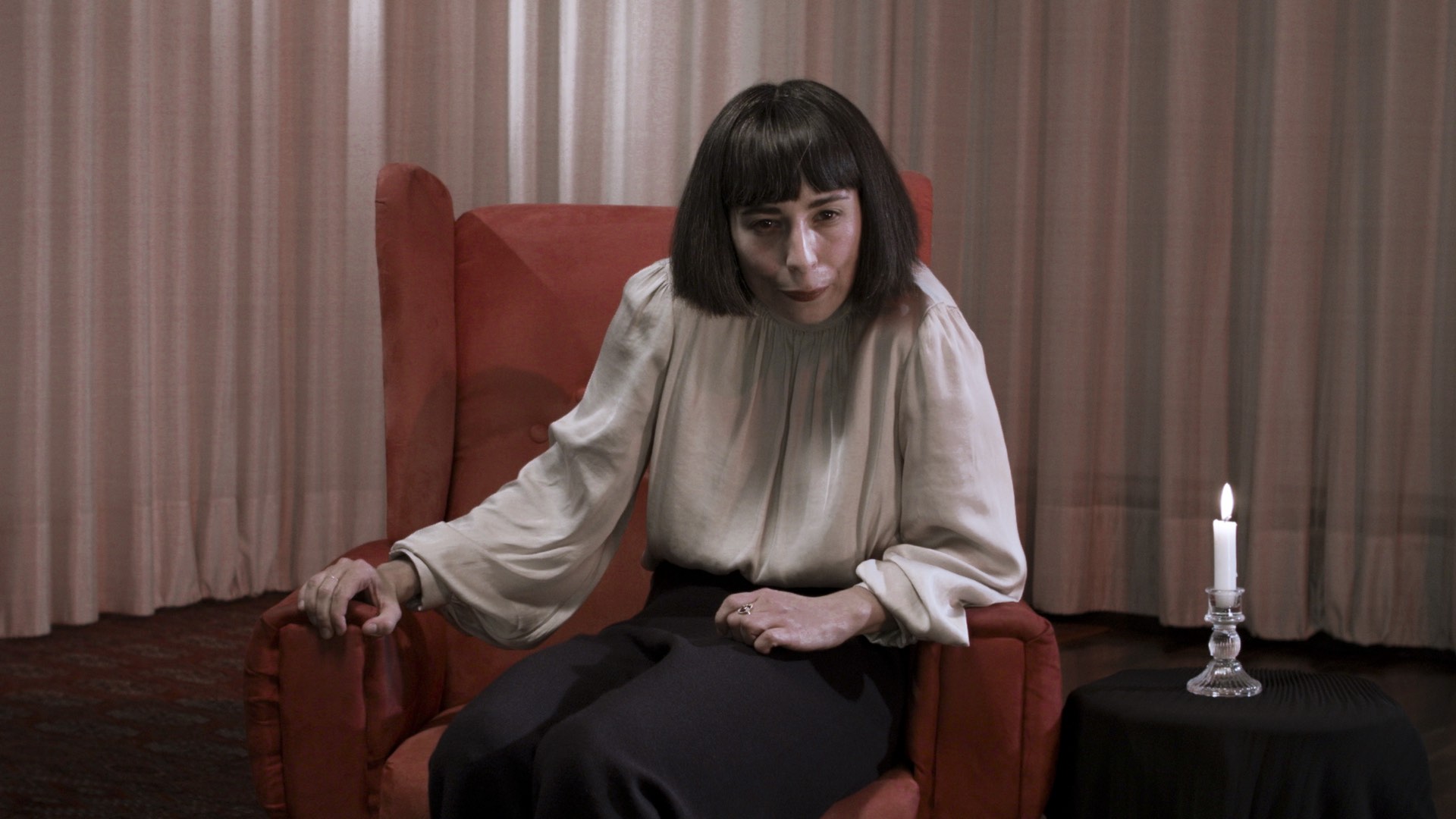
* film stills by Andreas Bolm and Lisa Rave.
Moving Margins Chapter II
moving arti|facts from the margins of dance archives
into accessible scores and formats

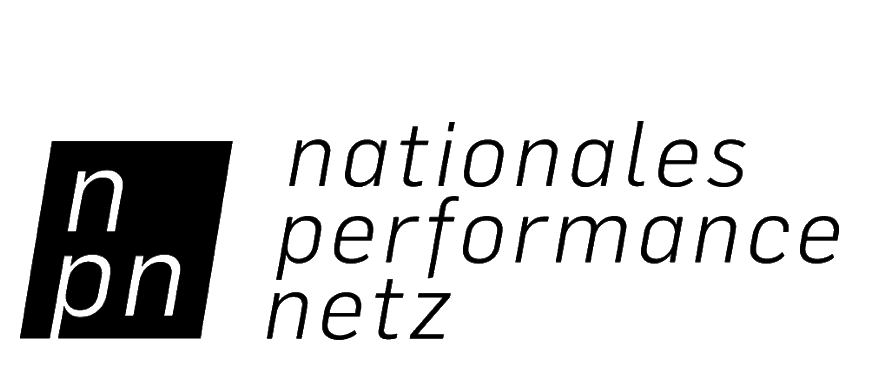
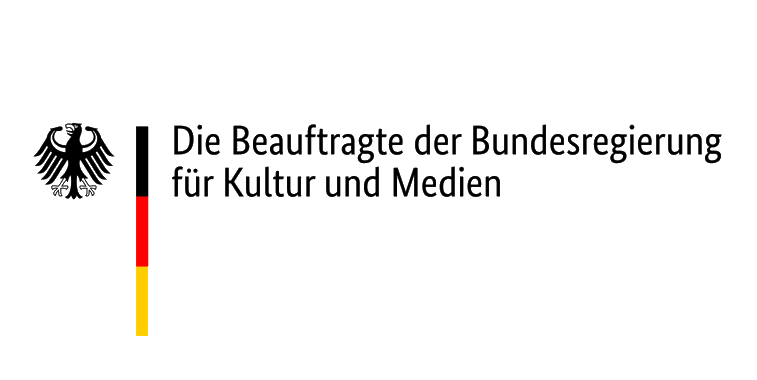
Supported by the NATIONAL PERFORMANCE NETWORK
- STEPPING OUT, funded by the Federal Government
Commissioner for Culture and Media within the
framework of the initiative NEUSTART KULTUR.
Assistance Program for Dance.
artistic researches
Supported by the NATIONAL PERFORMANCE NETWORK
- STEPPING OUT, funded by the Federal Government
Commissioner for Culture and Media within the
framework of the initiative NEUSTART KULTUR.
Assistance Program for Dance.
© 2021 All rights reserved to Sasha Portyannikova, Nitsan Margaliot and the interviewees.

